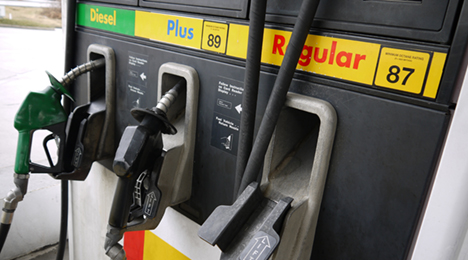3 Factors Easing Gas-Price Impact

As summertime really heats up with Fourth of July coming later this week, Manheim chief economist Tom Webb again addressed the question of how changing gas prices are going to influence the wholesale and retail markets. The latest query came in light of tension resurfacing in Iraq not having a dramatic impact at the pump like it has in the past.
Webb explained three conditions now are more entrenched than they were previously.
“Increased energy production in the U.S. (and reduced gasoline demand) has made us less susceptible to international shocks,” Webb said in the June edition of Manheim’s Auto Industry Brief. “Normal seasonal forces are also holding current prices in check.”
Webb also pointed out that increased fuel efficiency of new vehicles also is playing a role. He mentioned data from the University of Michigan that showed the average fuel economy of a new vehicle sold in May was 25.6 mpg. That level is an increase of 5.5 mpg from October 2007, the first month the university started to monitor this metric.
“The monthly price for a gallon of gas indicate the cost to drive a new vehicle 1,000 miles has trended down for three years,” Webb said.
“This is not to suggest that rising gas prices would not be an issue for the economy,” he continued. “The fuel efficiency of the overall fleet has obviously increased less rapidly than for new vehicles alone.
“And low- to middle-income households remain sensitive to gas prices,” Webb went on to say. “That’s especially true now that other basic costs — like food — are on the rise.”
Before getting into the gas-price discussion, Webb shared his general thoughts about the economy and the auto industry as the first half of 2014 passes.
“It’s time to ‘roll out those lazy, hazy, crazy days of summer.’ And they will indeed be lazy (continued subpar economic growth), hazy (no definitive directional turns), and crazy (think ‘not normal as opposed to ‘new normal,’” Webb said.
“Meanwhile, dealers will wish that ‘summer could always be here’ because new- and used-vehicle sales promise to remain rock-steady and profit-producing,” he continued.
Webb also touched on the positive position for dealers beyond moving metal.
“When dealers aren’t making deals with customers, they will be making them among themselves as dealership buy/sell activity will remain strong, with high multiples,” he said.
And how does the auction industry come into play?
Webb replied with, “Who better than the auction industry to provide the ‘soda and pretzels and beer?’ Yes, traditional in-lane auction volumes will grow even as alternative channels increase. But, with unit increases in used retail sales outpacing the rise in wholesale supply, don’t look for any collapse in residual values.”

 View The Latest Edition
View The Latest Edition

